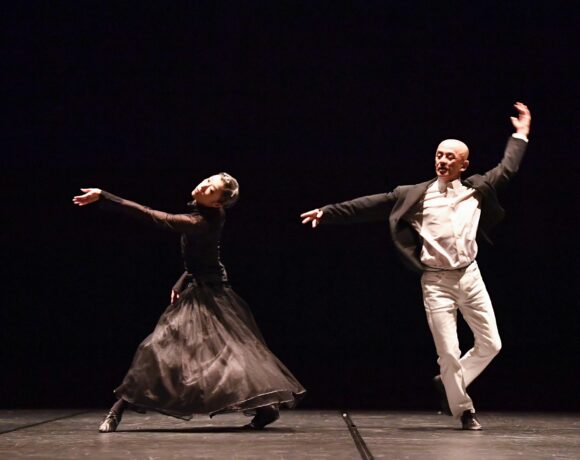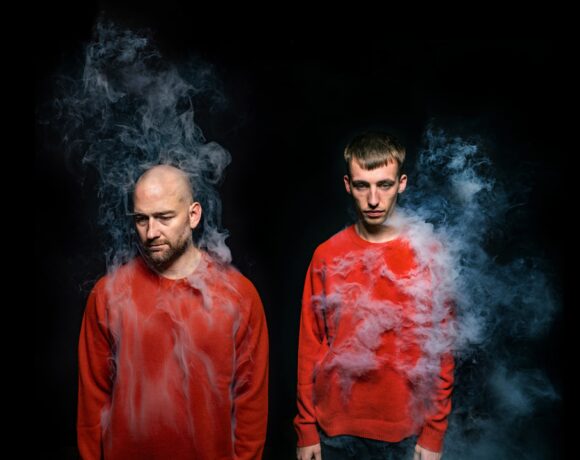BOZAR, Centre for Fine Arts of Brussels presents, through 10 January 2021, the exhibition Danser Brut. The show, hosted on a large section of the museum of the Belgian capital, as well as at the Dr Guislain museum in Ghent, aims to shed light on the relationship between dance, performance and the visual arts, collective unconscious and individual self, physical repression and the liberation of movement. Such movement, as described by the curators, is repetitive and involuntary. The title is constituted by a first word, which defines a specific action, and a second one that escapes clear comprehension. If dance can be a meditated, controlled activity, after a relatively precise scheme, the adverb brut suggests a constitutive unpredictability, connected to chance and the unconscious, far from any calibrated self-control.
The show highlights artworks and documentation of performances by, among others, Louise Bourgeois, Michaël Borremans, Henri de Toulouse-Lautrec, Rebecca Horn, Vaslav Nijinski, Jackson Pollock, as well as a rich selection of films, theatre performances, and video art. Five thematic sections explore different aspects of movement: from the merry-go-round to medieval ritual dances, in particular the so-called ‘dance epidemics’, from the fourteenth to the eighteenth century; from the forensic and medical photography of neurologist Jean-Martin Charcot, in late eighteenth and early twentieth century Paris, to the posters of cancan dancers of the same period; until the cinema of George Meliés, Charlie Chaplin, Georg W. Pabst. The exhibition considers eventually contemporary performances, such as those, among others, by Yvonne Rainer, Joachim Koester and Arnulf Rainer.
The focus of the show is dance, which involves the body in its whole, as well as facial mimicry and hand’s gestuality. The exhibition project, according to the curator’s statement, has also been triggered particularly by two key questions: what are we able to grasp, while studying the expressive power of the body, about the unconscious? And secondly, what is the importance of the clinical study of neuroses and neurological syndromes, in relation to the development of the visual arts, cinema, and dance?
The first artwork welcoming the visitor is a video, Tänzerische Pantomimen (Pantomime of Dance, 1925) by Valeska Gert, a German artist and performer. It is a succession of contradicting poses and gestures, at times altogether grotesque, ecstatic and frantic: a perfect combination of trance, cabaret, mime and theatre-dance. Gert, a pioneer of performance art, defined by some as a proto-punk artist, openly criticised the bourgeoise of the Weimar Republic. Along the same line, the expressionistic cinema of Georg W. Pabst, with Paracelsus (1943), reflects upon the subversive power of dance, yet from a retrospective point of view. The historical film evokes, among other episodes, an actual ‘dance epidemics’ from the sixteenth century, where the participants, as caught up by a mimetic, hypnotic fever, follow altogether the same movements of a single performer. A similar research into the phenomenon of dancing mania informed also Joachim Koester’s film Tarantism (2007), referencing a choreomaniac Italian phenomenon, known under the same name, as well as La Taranta (1962), by anthropologist Gianfranco Mingozzi. Referencing sacred and profane practices, the exhibition continues with a section, perhaps of secondary importance, about the heritage of the merry-go-round in popular culture. Another section of particular relevance is the chapter with several works on paper by Paul Richer, executed at the Salpêtrière hospital in Paris. Richer’s etchings portray men and women affected by different psychopathologies. These works are the proof of how repetitive gestures were interpreted as primary symptoms of a psychic disorder, as well as how medico-legal institutions objectify, label and classify the mimicking power of the body.
A section about the gestuality of the hands highlights works by, among others, Michaël Borremans, Henri Cartier-Bresson, and choreographer Yvonne Rainer. The latter reifies, with Hand Movie (1966), palms and fingers, portrayed as independent bodies, which are capable of creating a hilarious, autonomous choreography. Another section, which reflects upon the relationship between drawing and gesture, seems to raise another key issue around art making. Here we find Jackson Pollock’s gestuality, in contrast against the formalism of the avant-gardes of the early twentieth century; next to the lesser known drawings by the étoile of the Ballet Russes Vaslav Nijinsky. The artworks of the Polish choreographer are closer to the geometric abstraction of the early avant-gardes, as the likes of Hilma af Klint or Bruno Taut.
The exhibition, according to the introductory curatorial presentation, does not aim to illustrate the history of dance, nor its iconography. There are some grey areas, however, that the curatorial project seems to present, although not inquired with any further in-depth analysis. The presence of Georg W. Pabst, for instance, provides an indirect example of how Twentieth-century totalitarianisms, like Nazism, used performance for propagandistic purposes. At the same time, there are no any other references to the place such a key element of the ‘total work of art’, the performance of the masses, had for the same dictatorial regimes. Similarly, performance-as-art, as we know it today, is highlighted as a liminal art form, represented by some artworks of few relevant artists (Arnulf Rainer, Rebecca Horn, Dennis Hoppenheim). By avoiding presenting neither the history of dance, nor its iconography, yet by considering the importance of dance on a visual level, the exhibition’s project misses some precious opportunities: the possibility of investigating the visual fortune, as well as the cultural history, of the trope of the maenad, so acutely studied in iconology. The bacchante, the frenetic dancer, is only indirectly evoked, against the light of some cinematic and theatrical performances. Additionally, the relationship between dance and the repetitiveness of gesture, lucidly studied by Pina Bausch, Anne Teresa De Kreesmaeker, Jan Fabre or Dimitris Papaioannou, just to name few choreographers, remains eventually shily hinted. The stone is thrown, the hand is hidden. At BOZAR, the innermost ghosts of the human psyche sketch the outlines of the unconscious, which hovers, reluctantly, like a blurred shadow.
Elio Ticca
Info:
Danser Brut
curated by Christophe Boulanger et Savine Faupin – concept adapted by Ann Geeraerts e Yoon Hee Lamot
24 September 2020 – 10 January 2021
BOZAR – Centre for Fine Arts
Rue Ravensteinstraat 23
1000 Bruxelles, Belgio
Museum Dr Guilslain Ghent
Jozef Guislainstraat 43, 9000 Gand, Belgio
 Joachim Koester, Tarantism, 2007, Courtesy of the artist and Jan Mot, Brussels, © Courtesy of Joachim Koester and Jan Mot, Bruxelles. Courtesy © BOZAR, Bruxelles
Joachim Koester, Tarantism, 2007, Courtesy of the artist and Jan Mot, Brussels, © Courtesy of Joachim Koester and Jan Mot, Bruxelles. Courtesy © BOZAR, Bruxelles
 Danser Brut. Exhibition view at BOZAR, Bruxelles. Courtesy © BOZAR, Bruxelles
Danser Brut. Exhibition view at BOZAR, Bruxelles. Courtesy © BOZAR, Bruxelles
 Danser Brut. Exhibition view at BOZAR, Bruxelles. Courtesy © BOZAR, Bruxelles
Danser Brut. Exhibition view at BOZAR, Bruxelles. Courtesy © BOZAR, Bruxelles
 Michaël Borremans, Red Hand, Green Hand (2), 2010, Private collection, courtesy Zeno X Gallery, Antwerp, © Courtesy Zeno X Gallery, Antwerp Peter Cox. Courtesy © BOZAR, Bruxelles
Michaël Borremans, Red Hand, Green Hand (2), 2010, Private collection, courtesy Zeno X Gallery, Antwerp, © Courtesy Zeno X Gallery, Antwerp Peter Cox. Courtesy © BOZAR, Bruxelles
 Rebecca Horn, Pencil Mask from Performances II, 1973, Tate. Presented by the artist 2000. © Rebecca Horn. Courtesy © BOZAR, Bruxelles
Rebecca Horn, Pencil Mask from Performances II, 1973, Tate. Presented by the artist 2000. © Rebecca Horn. Courtesy © BOZAR, Bruxelles

Elio Ticca (Nuoro, Italy, 1988) is a visual artist and author. Graduated in visual arts and history of art, is a freelance contributor of Juliet Art Magazine, and other publications. He lives and works in Brussels.






NO COMMENT